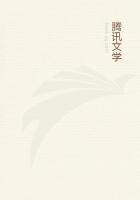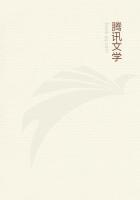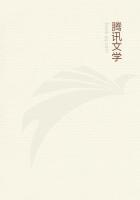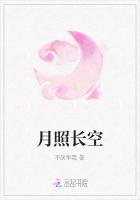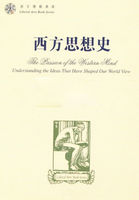It is plain we have in Europe stories of a similar complexion;and the Polynesian VARUA INO or AITU O LE VAO is clearly the near kinsman of the Transylvanian vampire.Here is a tale in which the kinship appears broadly marked.On the atoll of Penrhyn,then still partly savage,a certain chief was long the salutary terror of the natives.He died,he was buried;and his late neighbours had scarce tasted the delights of licence ere his ghost appeared about the village.Fear seized upon all;a council was held of the chief men and sorcerers;and with the approval of the Rarotongan missionary,who was as frightened as the rest,and in the presence of several whites -my friend Mr.Ben Hird being one -the grave was opened,deepened until water came,and the body re-interred face down.The still recent staking of suicides in England and the decapitation of vampires in the east of Europe form close parallels.
So in Samoa only the spirits of the unburied awake fear.During the late war many fell in the bush;their bodies,sometimes headless,were brought back by native pastors and interred;but this (I know not why)was insufficient,and the spirit still lingered on the theatre of death.When peace returned a singular scene was enacted in many places,and chiefly round the high gorges of Lotoanuu,where the struggle was long centred and the loss had been severe.Kinswomen of the dead came carrying a mat or sheet and guided by survivors of the fight.The place of death was earnestly sought out;the sheet was spread upon the ground;and the women,moved with pious anxiety,sat about and watched it.If any living thing alighted it was twice brushed away;upon the third coming it was known to be the spirit of the dead,was folded in,carried home and buried beside the body;and the aitu rested.The rite was practised beyond doubt in simple piety;the repose of the soul was its object:its motive,reverent affection.The present king disowns indeed all knowledge of a dangerous aitu;he declares the souls of the unburied were only wanderers in limbo,lacking an entrance to the proper country of the dead,unhappy,nowise hurtful.And this severely classic opinion doubtless represents the views of the enlightened.But the flight of my Lafaele marks the grosser terrors of the ignorant.
This belief in the exorcising efficacy of funeral rites perhaps explains a fact,otherwise amazing,that no Polynesian seems at all to share our European horror of human bones and mummies.Of the first they made their cherished ornaments;they preserved them in houses or in mortuary caves;and the watchers of royal sepulchres dwelt with their children among the bones of generations.The mummy,even in the making,was as little feared.In the Marquesas,on the extreme coast,it was made by the household with continual unction and exposure to the sun;in the Carolines,upon the farthest west,it is still cured in the smoke of the family hearth.
Head-hunting,besides,still lives around my doorstep in Samoa.
And not ten years ago,in the Gilberts,the widow must disinter,cleanse,polish,and thenceforth carry about her,by day and night,the head of her dead husband.In all these cases we may suppose the process,whether of cleansing or drying,to have fully exorcised the aitu.
But the Paumotuan belief is more obscure.Here the man is duly buried,and he has to be watched.He is duly watched,and the spirit goes abroad in spite of watches.Indeed,it is not the purpose of the vigils to prevent these wanderings;only to mollify by polite attention the inveterate malignity of the dead.Neglect (it is supposed)may irritate and thus invite his visits,and the aged and weakly sometimes balance risks and stay at home.Observe,it is the dead man's kindred and next friends who thus deprecate his fury with nocturnal watchings.Even the placatory vigil is held perilous,except in company,and a boy was pointed out to me in Rotoava,because he had watched alone by his own father.Not the ties of the dead,nor yet their proved character,affect the issue.A late Resident,who died in Fakarava of sunstroke,was beloved in life and is still remembered with affection;none the less his spirit went about the island clothed with terrors,and the neighbourhood of Government House was still avoided after dark.We may sum up the cheerful doctrine thus:All men become vampires,and the vampire spares none.And here we come face to face with a tempting inconsistency.For the whistling spirits are notoriously clannish;I understood them to wait upon and to enlighten kinsfolk only,and that the medium was always of the race of the communicating spirit.Here,then,we have the bonds of the family,on the one hand,severed at the hour of death;on the other,helpfully persisting.
The child's soul in the Tahitian tale was wrapped in leaves.It is the spirits of the newly dead that are the dainty.When they are slain,the house is stained with blood.Rua's dead fisherman was decomposed;so -and horribly -was his arboreal demon.The spirit,then,is a thing material;and it is by the material ensigns of corruption that he is distinguished from the living man.
This opinion is widespread,adds a gross terror to the more ugly Polynesian tales,and sometimes defaces the more engaging with a painful and incongruous touch.I will give two examples sufficiently wide apart,one from Tahiti,one from Samoa.

